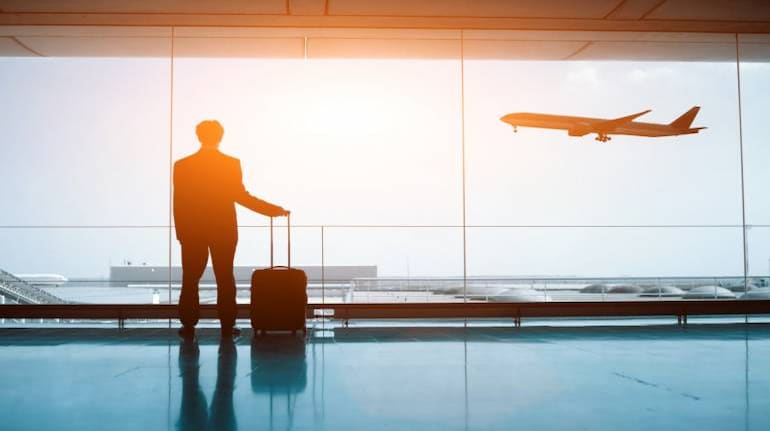



The article, “Fewer flights, higher fares: Should DGCA make airlines fly more?” (Moneycontrol May 30, 2023) triggered a series of news stories in print media and debates on TV news channels highlighting the ordeal of passengers who had or were being forced to pay exorbitant fares for air travel.
The consequent public outrage prompted Union minister of civil aviation Jyotiraditya Scindia to convene a meeting of airlines’ representatives to take stock of the situation. Describing the fares as “abnormal”, Scindia asked airlines to self-monitor the spot fares, which had for economy class travel touched Rs 30,000-40,000 or even more, for certain sectors on certain days, as against the usual fare band of Rs 5,000-8,000.
A significant contributing factor – airlines not operating the number of flights that they themselves had offered to fly daily for getting DGCA’s approval for summer schedule – wasn’t acted upon for remedial action. A solution to the issue of high air fares has thus remained largely elusive though spot fares have undoubtedly declined marginally, which can be described as a temporary phenomenon. The demand has also cooled down as many prospective travellers have stopped looking at travel options in the current period due to unaffordable fares.
Huge Daily Flight DeficitIn April, ten domestic airlines collectively operated 20,494 flights per week or 2,927 flights per day as against the approved 22,915 weekly flights or 3,273 flights per day. Average daily deficit? 346 flights! This is no small number. Interestingly, in the pre-COVID months, airlines were operating over 3,000 flights daily and flying at least 25,000 less passengers. More passengers chasing fewer seats these days is thus a harsh reality. Let us also not forget that this data analysis is of April when Go First airline was still operating.
It is an unfortunate aspect that while the civil aviation ministry and regulatory agency, the DGCA, recognise the impact of reduction in number of flights on air fares – like in the case of Go First’s unilateral action of suspending flights, the same officials aren’t inclined to understand that operating fewer flights than committed in summer schedule also amounts to reduced availability of flights and thereby having a distinct bearing on increase in air fares. Only if the aviation ministry officials recognise this reality can corrective action like forcing airlines to maintain adequate services as per approved flight schedules be initiated. What is the rationale of seeking DGCA’s prior approval for flight schedules if the final decision to operate the number of flights is left to airlines’ convenience when demand exists and is on the rise?
The correlation between compliance percentage – number of flights actually operated against number approved by DGCA – vis-a-vis load factor achieved by an airline is also clearly evident. Lower the compliance rate higher the load factor registered by an airline. SpiceJet, which operated only 1,194 of the approved 2,240 flights (53.31 percent), recorded a load factor of 91.57 percent – the highest amongst all airlines. On the contrary, Akasa airline, which operated 755 as against 751 approved flights (103.21 percent) had a load factor of 86.53 percent – the lowest in the industry.
Grounded Aircraft Theory DebunkedThe lack of understanding among “aviation experts” invited on TV debates or quoted in print media was also evident. Many of the experts reasoned the operation of fewer flights by some airlines due to grounded aircraft not being available for flying. This wasn’t a factually correct assessment as any industry person, who has worked for an airline, will aver.
Airlines factor in availability of aircraft and operating crew, maintenance time needed for servicing aircraft, etc, before submitting their flight schedules to DGCA for approval. What has grounded aircraft (some of them grounded even two years ago) then got to do with the operation of fewer flights? One simply can’t give credence to this thought process.
If any proof was indeed needed to debunk this theory the performance of Indigo airlines provides the clinching proof. Most people in the industry are privy to information that due to engine related issues Indigo has about 30 aircraft on ground. Did this impact Indigo’s compliance? No. Indigo operated 11,375 out of the approved 11,465 flights (99.22 percent), with a load factor of 87.46 percent, just above Akasa but less than all other airlines.
While the above analysis is based on April 2023 performance data, which is in public domain, the ministry of civil aviation and DGCA will certainly be able to access and analyse the May 2023 data, before it is released for public consumption, to confirm the pattern. The exercise will come in handy for arriving at a logical conclusion that operating fewer than approved flights have a bearing on air fares; there is an incentive for airlines to operate fewer flights for attaining higher load factors (at extraordinarily high fares) - as established above; and that DGCA ought to be monitoring actual flight operations vis-a-vis approval granted, so that fares remain stable and affordable, and not see an astronomical surge like we witnessed in the past fortnight. Adequate seat capacity will always be the best bet for ensuring fare stability.
Since airlines are in commercial business it is they who should be made to stretch their resources rather than a passenger, who often has no option but to pay high fares for travel at short notice, even when fares have in a way become unaffordable.
Jitender Bhargava is former executive director of Air India and author of ‘The Descent of Air India’. Views are personal, and do not represent the stand of this publication.Discover the latest Business News, Sensex, and Nifty updates. Obtain Personal Finance insights, tax queries, and expert opinions on Moneycontrol or download the Moneycontrol App to stay updated!
Find the best of Al News in one place, specially curated for you every weekend.
Stay on top of the latest tech trends and biggest startup news.